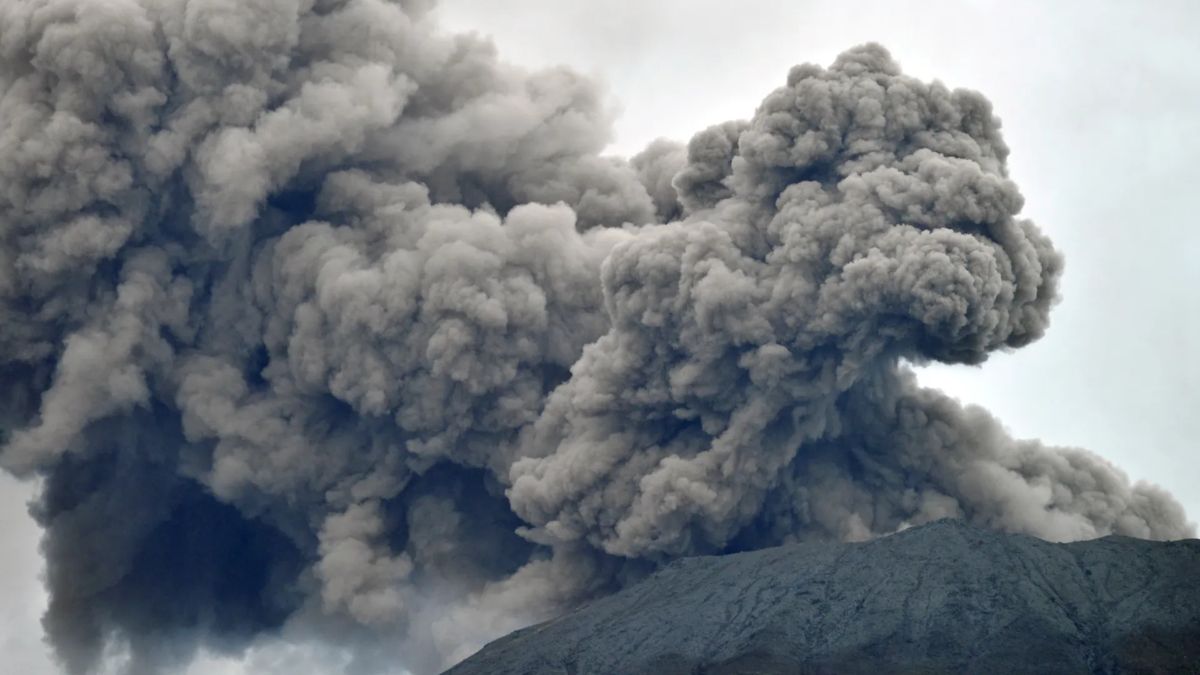The Ruang volcano, situated in North Sulawesi Province, Indonesia, has been exhibiting intense volcanic activity since Thursday, April 18th. The volcano’s repeated explosive eruptions have sparked grave concerns over potential tsunami risks, prompting the urgent evacuation of thousands of residents from the surrounding areas.
The Unfolding Volcanic Crisis
The volcanic drama unfolded early on Thursday when Ruang erupted violently, spewing towering columns of ash and smoke high into the atmosphere. According to the Indonesian volcanology agency, the volcano has erupted at least five times over the past 24 hours. The eruptions have ranged from violent explosions to lava fountaining from the crater.
With each powerful eruption, authorities have escalated the danger level for Ruang. Currently, it is at the highest Level IV alert, indicating a hazardous eruption is ongoing with the potential for more high-impact explosions.
Regional Disruption from Volcanic Ash
The eruption of the Ruang volcano has caused significant disruptions across the region, extending far beyond the immediate evacuation zones. A thick blanket of volcanic ash has blanketed the surrounding areas, forcing the closure of schools and enveloping entire villages. The Sam Ratulangi International Airport in Manado has also been shut down for 24 hours due to the hazardous airborne ash plumes.
Ruang is one of over 120 active volcanoes that form part of the Pacific Ring of Fire in Indonesia, an area renowned for frequent seismic activity resulting from the collision of tectonic plates. While relatively less populated compared to other volcanic regions, past eruptions in North Sulawesi have proven deadly, such as the 1969 eruption of Lokon-Empung that claimed nearly 200 lives.
Eyewitness Accounts
Eyewitness videos and accounts have captured the terrifying force of Ruang’s eruptions. Footage shows fiery red lava fountains and flashes of purple lightning amid the towering ash plumes. “We’re running, guys,” one witness is heard saying in a video as they scramble to evacuate ahead of the approaching ashfall. “We are escaping because the ash is coming close.”
The repeated powerful blasts have already damaged homes in the vicinity, forcing the evacuation of a nearby hospital, according to officials. The eruption has been so intense that budget airline AirAsia has cancelled flights to nine airports in East Malaysia and Brunei due to aviation warnings about the hazardous ash plumes.
Here is a rewrite of the details about the escalating danger and highest alert level for the Ruang volcano eruption:
Eruption Escalates to Highest Alert Level
As Ruang’s volcanic activity rapidly intensified, Indonesia’s volcanology agency has raised the alert level to its highest at Level IV, indicating a hazardous eruption is in progress with the potential for even larger explosive events. “The potential for further eruptions is still high, so we need to remain alert,” warned agency official Heruningtyas Desi Purnamasari.
In response to the elevated threat, authorities have already evacuated over 800 people from the immediate vicinity surrounding the volcano. However, many more evacuations are anticipated, with the disaster mitigation agency planning to evacuate around 1,500 additional residents from the highest-risk zones. Another nearly 12,000 people on Sitaro and the neighbouring island of Tagulandang may also need to be evacuated.
To facilitate safe evacuations, a 6 km (4 mile) exclusion zone has been established around Ruang’s crater, with officials urging both residents and tourists to avoid the area. Transportation authorities have also shut down the airport in the provincial capital of Manado to avoid any disruptions from ashfall.
Looming Tsunami Threat Escalates Concerns
Perhaps the most severe risk is the potential for tsunamis if a portion of Ruang’s slopes were to collapse into the ocean. This scenario has precedent – the volcano’s 1871 eruption triggered deadly tsunamis when part of the mountain failed, killing around 400 people on Tagulandang island.
With the explosive intensity of the current eruption, authorities are remaining vigilant for any signs of an inbound tsunami threat. They have not ruled out ordering larger regional evacuations if the danger escalates further in the coming days.


